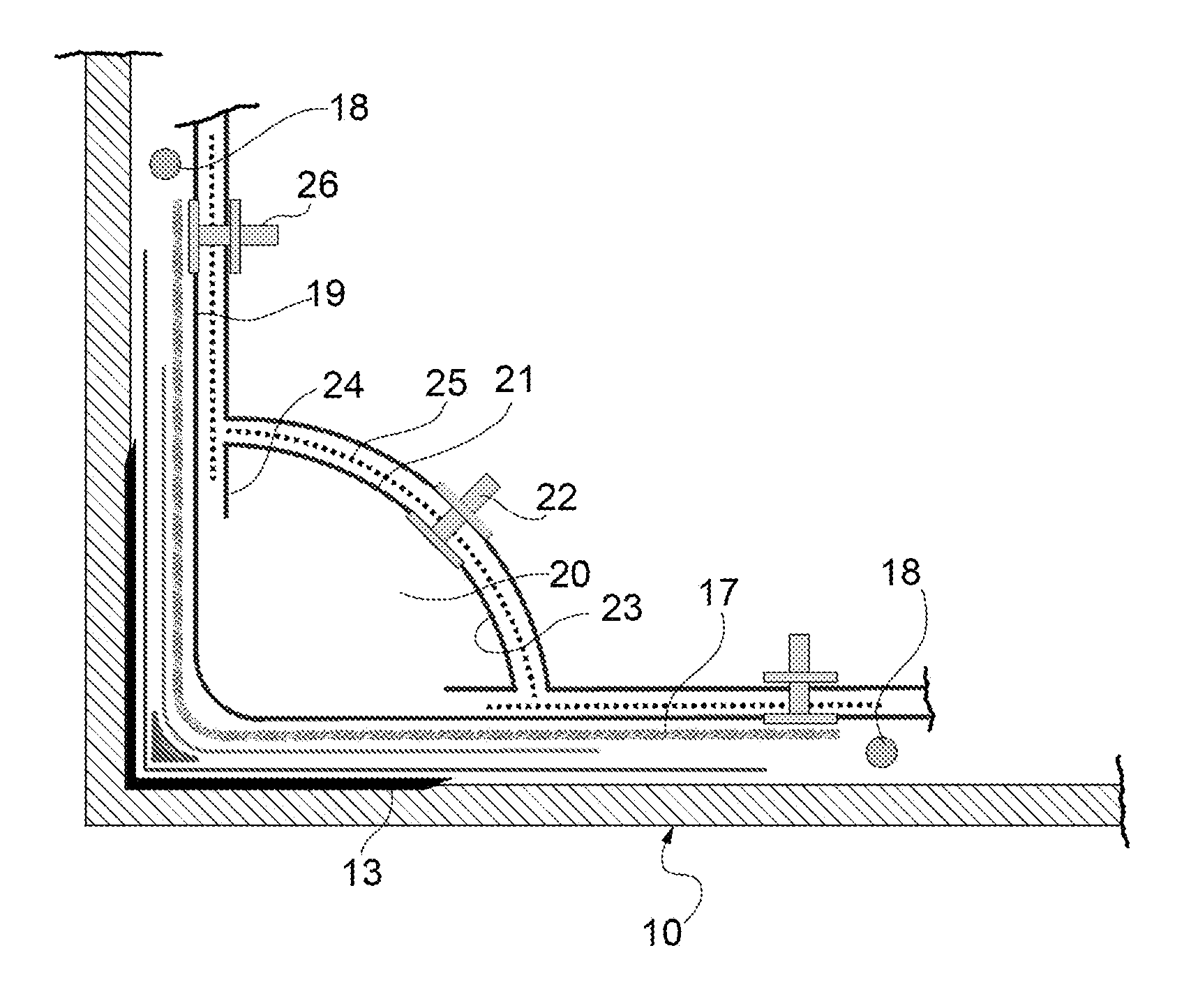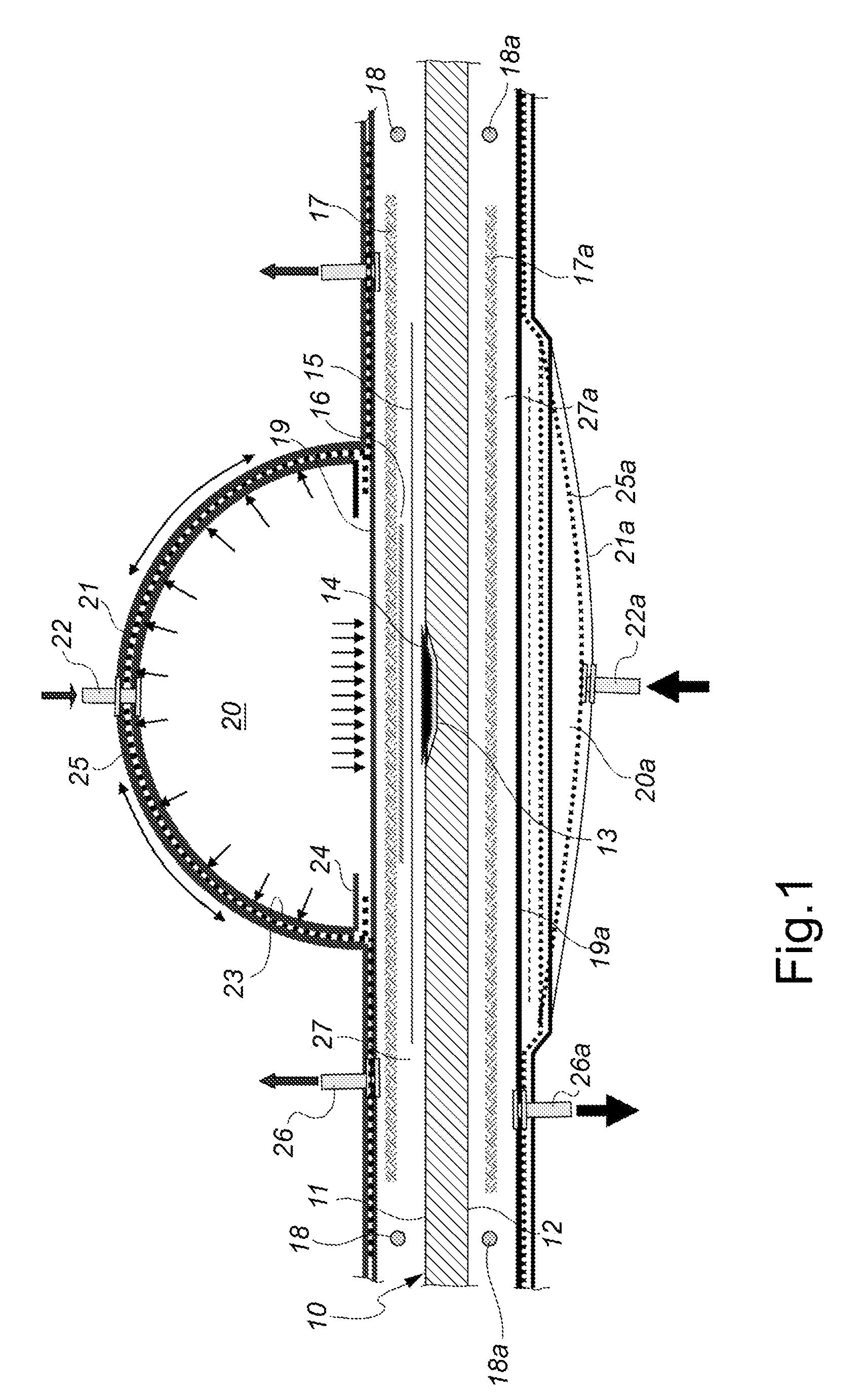Method and a device for repairing parts of composite material of an aircraft
a composite material and aircraft technology, applied in the direction of mechanical control devices, instruments, chemistry apparatuses and processes, etc., can solve the problems of poor mechanical properties, limited use of autoclaves, and unsatisfactory gluing lines
- Summary
- Abstract
- Description
- Claims
- Application Information
AI Technical Summary
Benefits of technology
Problems solved by technology
Method used
Image
Examples
Embodiment Construction
[0012]With reference to FIGS. 1 and 2, 10 designates a panel made of composite material which is composed of a cured thermosetting resin reinforced with fibres, usually but not exclusively carbon or glass fibres. The panel 10 forms part of the outer surface of an aircraft.
[0013]The panel 10 has two opposite sides 11, 12, one of which has a damaged or defective zone 13. A patch 14 made of fibre preimpregnated with a curable thermosetting resin (prepreg) is placed on this zone. The type of fibre and resin of the patch is chosen in each case so as to be compatible with the fibres and the resin from which the panel to be repaired is made. A parting film 15 of the type commonly used in the technology for production of composite carbon-fibre parts, for example an FEP film, a non-rigid heating layer 16 (for example a thermal covering layer) and a ventilation or breather layer 17, preferably made of polyester or glass fibre, are laid in succession on top of the patch 14.
[0014]A strip of adh...
PUM
| Property | Measurement | Unit |
|---|---|---|
| thickness | aaaaa | aaaaa |
| pressure | aaaaa | aaaaa |
| area | aaaaa | aaaaa |
Abstract
Description
Claims
Application Information
 Login to View More
Login to View More - R&D
- Intellectual Property
- Life Sciences
- Materials
- Tech Scout
- Unparalleled Data Quality
- Higher Quality Content
- 60% Fewer Hallucinations
Browse by: Latest US Patents, China's latest patents, Technical Efficacy Thesaurus, Application Domain, Technology Topic, Popular Technical Reports.
© 2025 PatSnap. All rights reserved.Legal|Privacy policy|Modern Slavery Act Transparency Statement|Sitemap|About US| Contact US: help@patsnap.com



